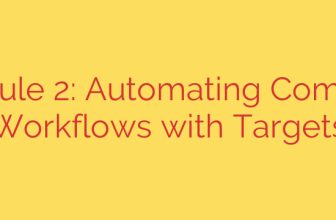
Urgent Security Alert: Cl0p Gang Exploits Critical Oracle E-Business Suite Flaw
A notorious cybercrime group is actively exploiting a critical vulnerability in Oracle’s E-Business Suite (EBS), putting organizations at immediate risk of data theft and extortion. The threat actor, known as Cl0p, is leveraging this flaw to steal sensitive information and demand payment, bypassing traditional ransomware deployment in favor of a direct extortion strategy.
This campaign underscores a significant shift in tactics for one of the world’s most prolific cybercriminal gangs, known for previous high-profile attacks on MOVEit Transfer and GoAnywhere MFT platforms. Security teams and administrators responsible for Oracle EBS must take immediate action to mitigate this threat.
The Target: A Critical Vulnerability in Oracle EBS
The attack centers on a severe vulnerability tracked as CVE-2024-21087. This flaw resides within the Web Applications Desktop Integrator (WebADI) component of the Oracle E-Business Suite.
Here’s what makes this vulnerability so dangerous:
- Remote Code Execution (RCE): It allows attackers to run their own code on a targeted server from anywhere in the world.
- No Authentication Required: An attacker does not need a valid username or password to exploit the flaw. This means any unpatched, internet-facing Oracle EBS instance is a potential target.
- Widespread Impact: Oracle E-Business Suite is a comprehensive set of enterprise applications used globally for finance, supply chain management, and manufacturing, making it a treasure trove of sensitive corporate data.
The vulnerability was addressed by Oracle in its April 2024 Critical Patch Update, but many organizations have yet to apply the security fix, leaving them exposed to this active campaign.
Cl0p’s New Strategy: Data Theft and Extortion
Instead of encrypting files and demanding a ransom, Cl0p’s current approach is more direct. The group’s attack follows a clear and concerning pattern:
- Exploitation: The attackers scan the internet for vulnerable Oracle EBS systems and exploit CVE-2024-21087 to gain initial access.
- Web Shell Deployment: Once inside, they deploy a custom tool named LIGHTSHOW. This web shell acts as a backdoor, allowing them to execute commands and navigate the compromised system.
- Data Exfiltration: Using LIGHTSHOW, the attackers identify and steal valuable data, such as financial records, customer information, and proprietary business intelligence.
- Extortion: After securing the data, Cl0p contacts the victim organization, threatening to leak the stolen information publicly unless a payment is made.
This is a pure extortion play. The focus is entirely on the threat of public exposure and the resulting regulatory fines, reputational damage, and competitive disadvantage.
How to Protect Your Organization: Actionable Security Steps
Given the active and ongoing nature of this threat, decisive action is crucial. If your organization uses Oracle E-Business Suite, follow these steps immediately to protect your systems and data.
1. Patch Immediately
The single most effective defense is to apply the security updates released by Oracle. The patch for CVE-2024-21087 was included in the April 2024 Critical Patch Update. Prioritize the deployment of this patch across all of your Oracle EBS environments without delay.
2. Hunt for Signs of Compromise
Patching is essential, but you must also investigate whether your systems have already been breached. Instruct your security team to look for Indicators of Compromise (IoCs), including:
- Unusual web requests to your Oracle EBS servers, especially those related to the WebADI component.
- The presence of unrecognized files or scripts in web server directories, specifically searching for the LIGHTSHOW web shell.
- Suspicious network activity or large, unexplained data transfers originating from your EBS servers.
3. Enhance System Monitoring
Increase the logging and monitoring of your Oracle EBS applications. Pay close attention to traffic patterns and access logs. Proactive monitoring can help you detect anomalous behavior early and respond before significant data loss occurs.
4. Review Your Incident Response Plan
Ensure your incident response plan is up-to-date and specifically addresses data extortion scenarios. Who needs to be notified? What are the legal and regulatory obligations in your jurisdiction? Having a clear plan allows for a swift and effective response, minimizing potential damage.
The Cl0p gang has proven its capability to execute large-scale attacks with significant impact. This campaign targeting Oracle E-Business Suite is a serious and immediate threat. Proactive patching and vigilant threat hunting are no longer optional—they are essential for safeguarding your organization’s most critical data.
Source: https://securityaffairs.com/182893/cyber-crime/google-warns-of-cl0p-extortion-campaign-against-oracle-e-business-users.html








